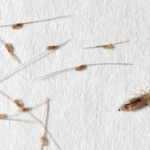Head lice are a common nuisance, especially in communal environments like schools and daycares. At the heart of a head lice infestation are the eggs, commonly known as nits. These tiny eggs can cause anxiety and frustration for anyone dealing with them. Understanding the life cycle of lice, particularly the duration nits take to hatch, is essential for effective treatment and prevention. This extensive article will delve into the nitty-gritty of lice eggs, their hatching timeline, and the implications for control and treatment.
The Biology of Lice Eggs
Lice eggs are laid by the female louse and are about the size of a pinhead. These nits are teardrop-shaped and are often mistaken for dandruff. However, unlike dandruff, nits are glued to the hair shaft with a substance secreted by the louse, making them difficult to remove.
A female louse may lay up to 10 eggs a day, securing them close to the scalp where the temperature is ideal for their development. The eggs’ color can vary from white, when they are empty, to brownish, when they contain a developing nymph.
The Lifecycle of Head Lice

The life cycle of head lice comprises three stages:
- Egg/Nit: The beginning stage, where the louse lays the egg.
- Nymph: The stage after hatching, where the louse is immature.
- Adult: The final stage, where the louse is fully grown and can reproduce.
The environment on the human scalp is perfectly suited for the lice life cycle, providing warmth and blood for nourishment.
The Hatching Timeline
Lice eggs take approximately 7-10 days to hatch. The exact time can vary based on environmental conditions like temperature and humidity. The scalp’s warmth plays a crucial role, with higher temperatures potentially speeding up the development process.
Once hatched, the empty egg shell remains on the hair shaft, moving away from the scalp as the hair grows. These empty shells are often white or clear, and many mistake them for active infestations.
Identifying and Dealing with Nits

Identifying nits is the first step in dealing with a lice infestation. Viable nits are typically located within a quarter inch of the scalp and are more challenging to remove than dandruff or other residues. Nits that are further away from the scalp are often non-viable, indicating an old infestation.
Treatment Strategies
There are various treatment strategies available, ranging from over-the-counter pediculicides to prescription medications and alternative remedies. The goal is not only to kill the active lice but also to prevent the nits from hatching.
The Challenge of Resistance
A significant challenge in treating head lice is pesticide resistance. Lice have developed resistance to many traditional treatments, making some over-the-counter options less effective.
Alternative Approaches

Alternative approaches, such as wet combing and heat treatment, have gained popularity, especially for those seeking pesticide-free methods. However, diligence and repetition are key since these methods don’t always kill nits and must be repeated to catch any newly hatched lice before they can lay more eggs.
Preventative Measures
Prevention is a crucial component of controlling head lice. Regular head checks, especially after a known exposure, and maintaining good hair hygiene can reduce the risk of infestation.
Myths and Misconceptions
There are many myths surrounding lice and nits. For example, head lice are not a sign of poor hygiene and can affect anyone. Furthermore, they cannot jump or fly, spreading only through direct contact.
Conclusion
Understanding the lifecycle of lice and the hatching time of nits is vital in managing infestations. With this knowledge, combined with vigilant checks and appropriate treatments, the control of head lice is attainable.
FAQs (Lice Eggs and Hatching Times)
Lice eggs typically take about 7 to 10 days to hatch under optimal conditions, which include a warm and humid environment like the human scalp.
Lice eggs require the warmth of the scalp to hatch. Off the scalp, they are unlikely to hatch and will die within 1 to 2 days due to a lack of warmth and sustenance.
Once lice eggs hatch, the remaining shell looks clearer and stays attached to the hair shaft. The hatched eggs (nits) will be further from the scalp due to hair growth.
Viable lice eggs tend to be closer to the scalp and have a tan to brown color, whereas hatched or dead nits are white or clear and located further away from the scalp.
Not necessarily. While lice eggs have a similar incubation period, slight variations in temperature and humidity can cause them to hatch at different times.
Lice eggs can be removed with a fine-toothed nit comb, with hair conditioner applied to wet hair to make the process easier. Some treatments also aim to loosen the glue that attaches nits to the hair shaft.
Extreme temperatures can kill lice eggs. They are likely to die in temperatures higher than 125°F (51.6°C) or in freezing temperatures for an extended period.
While hair dye and bleach have some chemicals that may kill adult lice, they are not reliable treatments for lice eggs due to the protective layer of the egg.
No, lice eggs are firmly glued to the hair shaft and cannot be transferred like adult lice. However, close head-to-head contact can transfer nits if the hair strands become intertwined.
The best practice is to use a treatment that is known to suffocate or dehydrate the eggs, combined with regular combing out of the eggs using a nit comb. Following up treatment with a second application one week later can catch any newly hatched lice before they can lay more eggs.



GIPHY App Key not set. Please check settings
One Comment